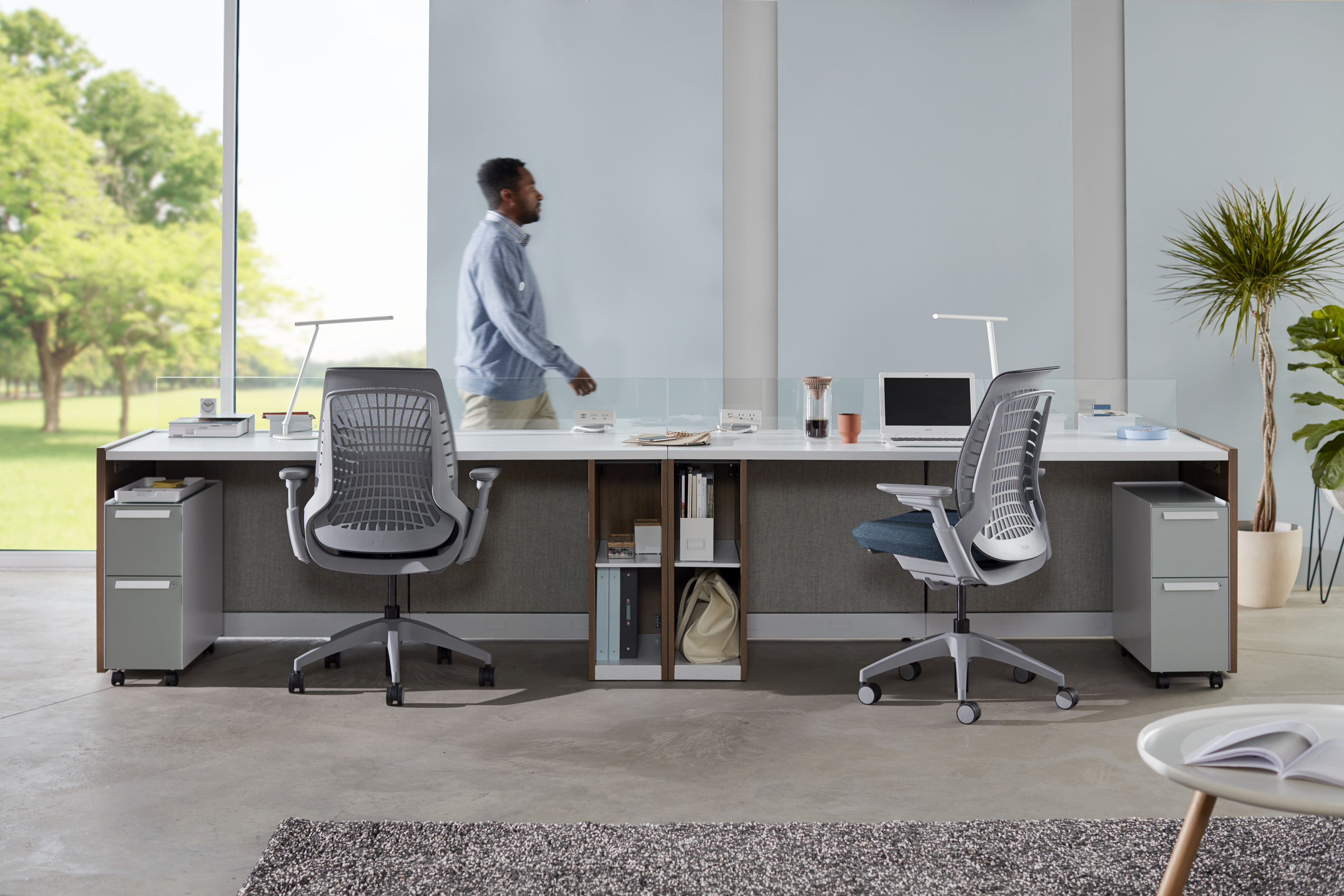In the ever-evolving landscape of modern workplaces, the concept of ergonomics has become increasingly prevalent, reshaping the design and functionality of office furniture.
Among the myriad of ergonomic innovations, office chairs stand out as a cornerstone of workplace comfort and productivity.
These chairs, meticulously engineered to support the natural alignment of the human body, are revolutionizing the modern workspace by prioritizing health, comfort, and efficiency.
The Rise of Ergonomics in Workspace Design
Ergonomics, the science of designing products to maximize efficiency and comfort, has gained significant traction in workspace design. As organizations recognize the importance of employee well-being and productivity, they are turning to ergonomic solutions, with office chairs at the forefront.
Unlike traditional chairs, which often contribute to discomfort and posture-related issues, ergonomic office chairs are specifically crafted to promote proper alignment and reduce strain on the body.
By embracing ergonomic principles in workspace design, organizations can create environments that foster employee health and satisfaction. Investing in ergonomic office chairs not only enhances comfort but also reflects a commitment to optimizing the workplace for peak performance and well-being.
Optimal Support for Enhanced Comfort
The hallmark of ergonomic office chairs lies in their ability to provide optimal support tailored to individual needs. From adjustable lumbar support to contoured seat cushions, these chairs are designed to accommodate various body types and preferences. By promoting better posture and reducing pressure points, ergonomic chairs alleviate discomfort and fatigue, allowing employees to remain focused and productive throughout the workday.
Moreover, the comfort offered by ergonomic chairs extends beyond physical well-being to encompass mental and emotional health. Employees who are comfortable and supported in their workspace are more likely to experience reduced stress levels and improved overall satisfaction, contributing to a positive work environment.
Boosting Productivity Through Design
Ergonomic chairs play a crucial role in boosting workplace productivity by optimizing the physical comfort of employees. With features such as adjustable armrests and seat height, these chairs empower individuals to customize their seating experience, ensuring maximum comfort and efficiency.
By minimizing distractions and discomfort associated with traditional seating, ergonomic chairs enable employees to focus their energy and attention on tasks at hand, leading to increased productivity and performance.
Additionally, ergonomic chairs facilitate movement and flexibility, allowing employees to shift between sitting and standing positions with ease. This dynamic approach to seating promotes blood circulation, reduces fatigue, and enhances cognitive function, ultimately contributing to a more vibrant and productive workspace.
Addressing Health Concerns
Prolonged sitting has been linked to various health concerns, including musculoskeletal disorders and obesity. Ergonomic office chairs offer a proactive solution to mitigate these risks by promoting better posture and supporting natural body movements.
By encouraging proper spinal alignment and distributing body weight evenly, these chairs reduce the strain on muscles and joints, minimizing the likelihood of chronic pain and injuries.
Furthermore, investing in ergonomic seating demonstrates an organization’s commitment to employee health and safety. By prioritizing preventative measures, such as ergonomic office chairs, employers can create a supportive work environment that values the well-being of its workforce.
Adaptability for Diverse Workstyles
One of the key advantages of ergonomic office chairs is their adaptability to diverse workstyles and preferences. Whether employees are engaged in focused individual tasks or collaborative team projects, ergonomic chairs can accommodate various working positions and activities. With adjustable features and intuitive design, these chairs promote flexibility and versatility, catering to the evolving needs of modern work environments.
Additionally, the adaptability of ergonomic chairs extends to remote work settings, where employees may not have access to traditional office amenities. By providing ergonomic seating options, organizations empower remote workers to create ergonomic workspaces at home, ensuring continuity in comfort and productivity.
Investment in Employee Well-Being
Viewing ergonomic office chairs as an investment in employee well-being yields significant returns for organizations. By prioritizing comfort and health in the workspace, employers demonstrate a commitment to supporting their workforce’s physical and mental wellness. This proactive approach not only reduces the likelihood of workplace injuries but also enhances employee satisfaction and retention.
Moreover, investing in ergonomic solutions reflects positively on an organization’s employer brand, attracting top talent and positioning the company as a desirable place to work. As employees increasingly prioritize work-life balance and wellness initiatives, ergonomic office chairs serve as a tangible demonstration of an employer’s dedication to creating a positive and supportive work environment.
Sustainability and Longevity
In addition to promoting employee health and productivity, ergonomic office chairs contribute to sustainability efforts by emphasizing durability and longevity. Unlike traditional chairs that may require frequent replacement due to wear and tear, ergonomic chairs are built to withstand the rigors of daily use. With high-quality materials and craftsmanship, these chairs offer a sustainable solution that reduces waste and environmental impact.
Furthermore, the longevity of ergonomic chairs translates to cost savings for organizations in the long run. By investing in durable seating solutions, employers can minimize expenses associated with frequent replacements and repairs, ultimately maximizing the return on investment in workplace furniture.
Cultural Implications and Employee Engagement
The adoption of ergonomic office chairs can have profound cultural implications within an organization, signaling a commitment to employee well-being and engagement. When employees feel supported and valued through ergonomic initiatives, they are more likely to be motivated and invested in their work. This positive reinforcement fosters a culture of trust, collaboration, and innovation, driving organizational success.
The Role of Technology in Ergonomic Design
Technological advancements have played a significant role in shaping the evolution of ergonomic office chairs. From advanced materials to innovative features such as adjustable tension control and synchronized reclining mechanisms, technology has enabled designers to push the boundaries of ergonomic excellence. By leveraging cutting-edge solutions, ergonomic chairs continue to evolve to meet the changing needs of modern workplaces.
Moreover, technology facilitates data-driven approaches to ergonomics, allowing organizations to gather insights into employee behavior and preferences. By analyzing ergonomic data, employers can make informed decisions about workspace design and furniture selection, further enhancing employee comfort and satisfaction.
Conclusion
In conclusion, ergonomic office chairs are redefining the modern workspace by prioritizing employee health, comfort, and productivity. From customizable features to sustainable design, these chairs offer a holistic solution to the ergonomic challenges of contemporary work environments.
By investing in ergonomic seating solutions, organizations demonstrate a commitment to creating inclusive, supportive, and dynamic workplaces that empower employees to thrive. As the workforce continues to evolve, ergonomic office chairs will remain indispensable tools for optimizing performance and well-being in the workplace.







